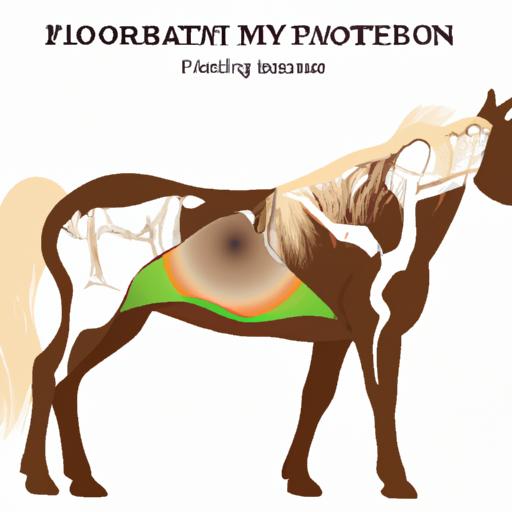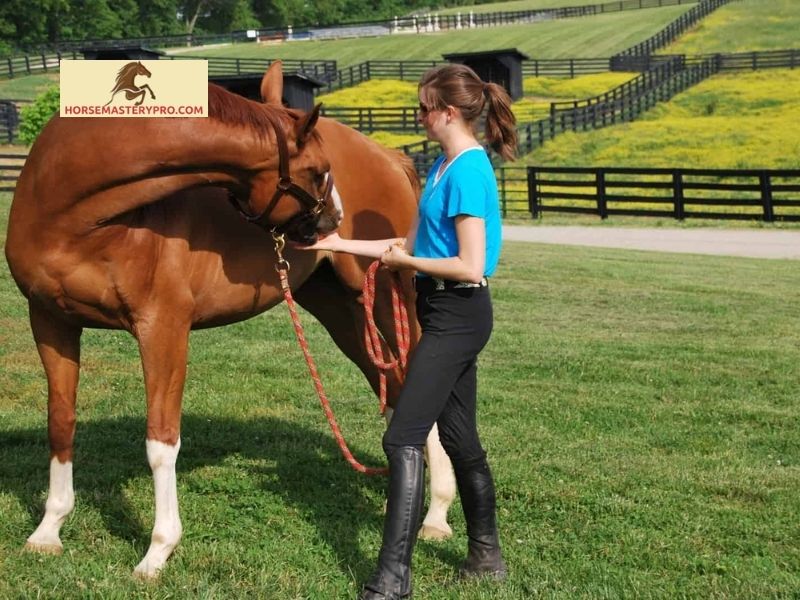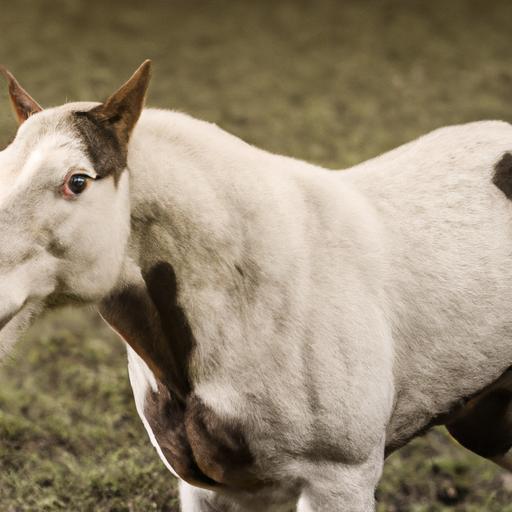Discover the key rehabilitation techniques and recovery timeline for horses with fibrotic myopathy. Learn how to support their healing journey effectively.
When it comes to addressing fibrotic myopathy in horses, a range of treatment options is available. The choice of treatment depends on the severity of the condition, the specific needs of the horse, and the recommendations of a qualified veterinarian. Fibrotic myopathy, a condition that affects our beloved horses, is a silent enemy lurking within their muscular systems. In this article, we will delve into the depths of this mysterious ailment, shedding light on its definition, prevalence, and the significance it holds for our equine companions.
A. Definition and brief overview of fibrotic myopathy

Imagine a scenario where your horse’s movement is hindered, its graceful stride tainted by an invisible force. Fibrotic myopathy is a condition characterized by the formation of fibrous tissue within the muscles, leading to a limited range of motion and discomfort for our equine friends.
When a horse suffers from fibrotic myopathy, the connective tissue within the affected muscle becomes thickened and contracted, impeding the normal extension and flexion of the limb. This fibrous scar tissue acts as a restrictive barrier, inhibiting your horse’s ability to move with ease and causing discomfort during physical activity.
B. Prevalence and significance of the condition in horses
Fibrotic myopathy is not an uncommon ailment among horses, especially those engaged in rigorous physical activities such as racing or jumping. While the exact prevalence remains uncertain, it is essential for horse owners and enthusiasts to be aware of this condition’s significance.
The impact of fibrotic myopathy extends beyond mere physical restriction. Horses affected by this condition may experience compromised performance, reduced athletic capabilities, and even psychological distress due to the discomfort and frustration caused by their limited mobility.
As responsible horse owners, it is crucial for us to understand the ins and outs of fibrotic myopathy, empowering ourselves with knowledge to recognize the signs, seek appropriate treatment, and provide our equine companions with the care they need and deserve.
Stay tuned as we explore the causes, symptoms, treatment options, and proactive measures to prevent fibrotic myopathy in horses. Together, we can ensure our horses trot freely and gracefully, reclaiming their natural stride.
Continue reading “Causes and Risk Factors” for a deeper understanding of fibrotic myopathy’s origins and the factors contributing to its development.
Causes and Risk Factors

A. Muscular trauma as the primary cause of fibrotic myopathy
Muscular trauma serves as the primary catalyst for the development of fibrotic myopathy in horses. Imagine a moment of misstep, a stumble, or an intense strain on the limb during physical exertion. These instances can lead to micro-tears in the muscle fibers, triggering an inflammatory response and setting the stage for fibrotic tissue formation.
The trauma inflicted upon the muscles initiates a cascade of events, causing the body to repair the damaged area. However, in some cases, the repair process goes awry, leading to the excessive production of collagen fibers, which ultimately culminate in the formation of fibrous scar tissue. This tissue restricts the normal movement of the affected limb, resulting in the manifestation of fibrotic myopathy.
B. Factors contributing to the development of the condition
While muscular trauma plays a pivotal role in the onset of fibrotic myopathy, several factors can increase the likelihood of its occurrence. Let’s explore these contributing factors:
- Repetitive Strain: Horses engaged in repetitive movements, such as jumping or racing, are more susceptible to fibrotic myopathy. The constant strain placed on the muscles increases the chances of micro-tears, providing the opportunity for scar tissue to develop.
- Poor Conditioning: Inadequate conditioning and muscle strength can make horses more prone to injuries. Weak muscles are less resilient and more susceptible to trauma, increasing the risk of fibrotic myopathy.
- Inappropriate Training Techniques: Improper training techniques, such as excessive strain on the muscles or sudden changes in intensity, can lead to muscle trauma and subsequent fibrotic myopathy.
- Genetic Predisposition: Certain horse breeds may have a genetic predisposition to developing fibrotic myopathy. It is important to be aware of the breed’s tendencies and take preventive measures accordingly.
Understanding the causes and risk factors associated with fibrotic myopathy allows us to take proactive steps in preventing its occurrence. By implementing proper training methods, ensuring adequate conditioning, and practicing mindful horsemanship, we can reduce the likelihood of our equine companions experiencing this debilitating condition.
Continue reading “Symptoms and Clinical Presentation” to learn how to identify the signs of fibrotic myopathy and aid in early detection.
Symptoms and Clinical Presentation

Common symptoms observed in horses with fibrotic myopathy
Identifying the early signs of fibrotic myopathy is crucial in ensuring prompt intervention and providing the necessary care for our equine companions. While each horse may exhibit different symptoms, there are several common indicators to watch out for:
- Lameness: One of the most noticeable signs is lameness, which becomes more pronounced during exercise or physical exertion. Affected horses may exhibit difficulty in extending or flexing the affected limb, resulting in an uneven gait.
- Muscle atrophy: Fibrotic myopathy can lead to muscle wastage or atrophy in the affected area. You may observe a visible loss of muscle mass, particularly in the hind limb, where this condition is often prevalent.
- Pain and discomfort: Horses with fibrotic myopathy may exhibit signs of pain and discomfort, such as sensitivity to touch, resistance during physical examination, or reluctance to engage in certain activities.
Diagnostic tools and techniques used to identify the condition
Accurate diagnosis is crucial to confirm the presence of fibrotic myopathy and rule out other potential causes of lameness. Veterinarians employ various diagnostic tools and techniques to evaluate and identify the condition, including:
- Physical examination: A thorough physical examination, including palpation and observation of the affected limb, can provide initial clues regarding muscle abnormalities and asymmetry.
- Ultrasonography: Ultrasonography is a valuable diagnostic tool that allows veterinarians to visualize the extent of fibrosis and assess the overall condition of the affected muscle.
- Diagnostic imaging: Radiographs (X-rays) and other imaging techniques, such as magnetic resonance imaging (MRI), may be utilized to gain a more detailed understanding of the affected muscle structure and identify any underlying bone or joint involvement.
- Biopsy: In some cases, a biopsy may be performed to obtain a tissue sample for microscopic evaluation. This helps confirm the presence of fibrotic myopathy and differentiate it from other muscular disorders.
By recognizing the common symptoms and employing accurate diagnostic methods, veterinarians can provide an accurate diagnosis, allowing for timely treatment and management of fibrotic myopathy in horses.
Stay tuned for “Treatment Options,” where we will explore the non-surgical and surgical interventions available to help alleviate the effects of fibrotic myopathy and restore our horses’ mobility and comfort.
Treatment Options
When it comes to addressing fibrotic myopathy in horses, a range of treatment options is available. The choice of treatment depends on the severity of the condition, the specific needs of the horse, and the recommendations of a qualified veterinarian. Let’s explore the two main avenues for managing fibrotic myopathy: non-surgical interventions and surgical procedures.
A. Non-surgical interventions for managing fibrotic myopathy
Non-surgical interventions serve as the primary approach for managing mild to moderate cases of fibrotic myopathy. These interventions aim to alleviate pain, reduce inflammation, and improve the horse’s mobility. Some of the commonly employed non-surgical treatment options include:
- Physical Therapy: Tailored physical therapy programs can help horses with fibrotic myopathy regain strength, flexibility, and range of motion. Techniques such as massage, stretching exercises, and range-of-motion exercises may be incorporated to promote healing and improve muscle function.
- Medication: Non-steroidal anti-inflammatory drugs (NSAIDs) may be prescribed to manage pain and reduce inflammation associated with fibrotic myopathy. Additionally, your veterinarian may recommend other medications to support the healing process and address any underlying conditions contributing to the development of fibrotic myopathy.
B. Surgical procedures available to treat severe cases
In severe cases of fibrotic myopathy where non-surgical interventions prove ineffective, surgical procedures may be considered. These procedures aim to remove the fibrous scar tissue and restore the horse’s normal range of motion. Two common surgical approaches include:
- Tenotomy: This procedure involves cutting the tendon attached to the affected muscle, allowing the scar tissue to be excised. Tenotomy can help release the tension caused by fibrotic myopathy and restore the horse’s ability to fully extend and flex the affected limb.
- Fasciotomy: Fasciotomy involves making an incision in the fascia surrounding the affected muscle, allowing for the release of tension and removal of scar tissue. This procedure aims to improve the horse’s mobility and alleviate the restrictions caused by fibrotic myopathy.
It is important to note that surgical interventions should only be pursued under the guidance of an experienced equine surgeon and after careful consideration of the horse’s overall health and well-being.
Continue reading “Rehabilitation and Recovery” to discover the crucial steps involved in helping horses recover from fibrotic myopathy and regain their strength and agility.
Conclusion
As we conclude our exploration of fibrotic myopathy in horses, it is evident that this condition can significantly impact the well-being and performance of our equine companions. By understanding the causes, symptoms, treatment options, and preventive measures, we can actively contribute to their rehabilitation and overall quality of life.
Rehabilitation for horses with fibrotic myopathy involves a combination of techniques and exercises tailored to their specific needs. Physical therapy, including stretching exercises, controlled movements, and targeted strengthening routines, can help improve range of motion and alleviate discomfort. Collaborating with a qualified equine rehabilitation specialist can ensure the best outcomes for your horse’s recovery journey.
It is important to note that the recovery timeline and prognosis for horses with fibrotic myopathy may vary depending on the severity of the condition, the individual horse’s response to treatment, and other factors. While some horses may experience significant improvement and regain their previous level of function, others may require ongoing management to maintain comfort and mobility.
In our pursuit of promoting equine health and well-being, we must prioritize preventive measures to minimize the risk of fibrotic myopathy. Regular exercise, proper warm-up and cool-down routines, and avoiding situations that may lead to muscular trauma can contribute to reducing the likelihood of developing this condition.
At horsemasterypro.com, we are committed to providing you with valuable insights and resources to enhance your understanding of equine health. Remember, knowledge is power when it comes to caring for our horses and ensuring they live their best lives.
Together, let us nurture the bond we share with these magnificent creatures and strive towards their optimal health and happiness.
Bolded: horsemasterypro.com


